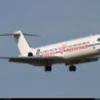-
Recently Browsing 0 members
No registered users viewing this page.

Scientists track penguin poop from space
By
WingsfaninGermany, in General
Rate this topic
No registered users viewing this page.

By
WingsfaninGermany, in General
Rate this topic